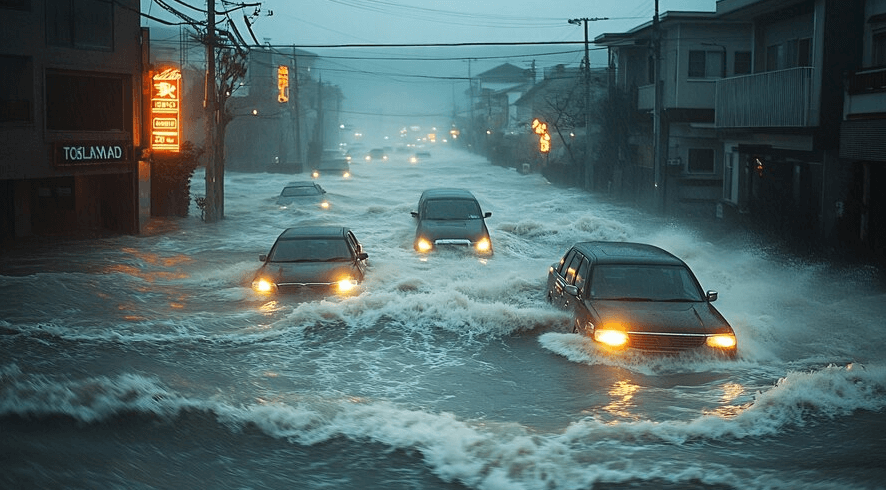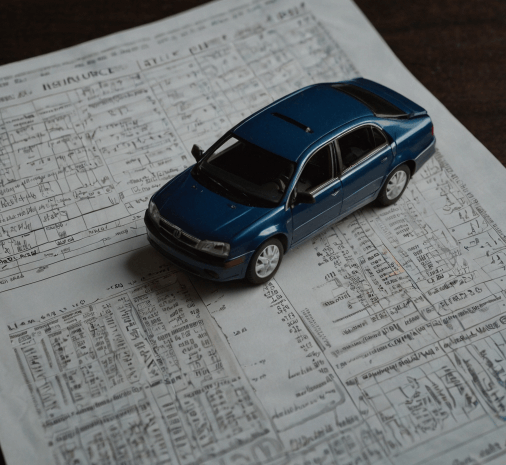Aside from the routine expenses of car ownership, this is one of the more common and costly natural disasters. The floodwaters can bring destructive damage to vehicles, which can be quite expensive in terms of repair or may result in a total loss of the vehicle.
This brings us to the question: “Does car insurance cover flood damage?” That would depend on the type of insurance cover one has, details of their policy, and nature of the incident of flooding.
Here, we consider how different car insurance policies take into account flood damage, what determines the coverage, and how to safeguard your car best against flooding costs.
1. Types of Car Insurance and Coverage of Flood Damage
Understanding what comprises coverage of flood damage requires explaining the difference between main types of car insurance coverage: liability, collision, and comprehensive. Each of these types of coverage offers some form of protection, but not all provide coverage in the case of flood damage.
a. Liability Insurance
Liability insurance is the most basic form of coverage, and often in most states, this is all that is legally needed. This type of insurance, when you have an accident and are found at fault, will cover other vehicles or people. You will not be covered for damages to your own vehicle if it is involved in an accident or some other cause. So, if you have liability coverage alone, and your car is damaged due to flooding, you will not be reimbursed for flood-related repairs.
b. Collision Insurance
Collision insurance pays for damage to your vehicle when an accident occurs, where your car hits another car, tree, or guardrail. However, collision coverage does not extend to damage originating from natural disasters or environmental conditions, including floods. This implies that if your car incurs flood damage, collision insurance will not pay anything.
c. Comprehensive Insurance
Comprehensive insurance is where flood damage coverage kicks in. It pays for damages to your car that are non-collision related, including fire, theft, vandalism, and natural disasters like hurricanes, hailstorms, and floods. With comprehensive coverage, in case one’s vehicle suffers flood damage, it is most probably covered; this, however, may be subject to the terms in your policy. Nonetheless, there are limits, exclusions, and conditions that may affect the scope of the coverage; this is what we shall look at in detail below.
2. What Comprehensive Insurance Covers in Flood Situations
Comprehensive insurance can cover a broad range of flood issues, and the coverage itself may vary depending on the policy. Several common places where comprehensive insurance may provide coverage include:
- Interior Damage: Floodwater can destroy upholstery, carpets, and electronics, among other interior components. If water enters the cabin, then generally interior repairs or replacement costs fall under comprehensive insurance.
- Engine Damage: In the case of your car, floodwater entering into the engine causes great mechanical damage. In general, comprehensive coverage will cover any repair and replacement needed in case of flood damage to the engine.
- Electrical System Damage: The electrical system, which works to fire the ignition, lighten up the headlights, and much more, is highly affected by the floodwaters in a car. Most comprehensive insurance policy coverage replaces such damage due to flooding.
- Total Loss: If the car is fully submerged or if the repair cost is higher than the cost of the vehicle, the insurance company may declare it a total loss and settle the claim on the basis of the current market value of the car.
3. Key Factors Affecting Flood Damage Coverage
Although comprehensive generally covers flood damage, several factors can come into play in the extent of that coverage and any resulting claims process.
a. Policy Deductibles and Limits
Most comprehensive insurance policies have deductibles, which are the out-of-pocket costs paid by you before your insurance kicks in and pays the rest. The rule of thumb is that the lower the deductibles, the higher the premium payments. Remember your deductible, because it would be subtracted from what you get for flood damage. Secondly, some policies may have specific limits on the coverage in case of natural disasters, which could cap the payout related to flood claims.
b. Location and the Risk of Flooding
The provider assesses the risk from the flood that is likely to hit your locality and either increase or decrease the premium based on that. For example, based on this factor, one living in a flood-prone area may have to pay higher premiums because of the high risk involved. Some insurance providers may also place restrictions on the cover provided or ask for additional documentation based on the location of the vehicle.
c. Waiting Periods and the Time of Onset of the Flood
Some policies have a waiting period before the activation of various types of coverage. For instance, if you just put comprehensive coverage on and some storm or flood event happened a few days later, there might be a waiting period with no coverage. Take the time to read your policy terms to ensure it will have active coverage when you need it.
4. Filing an Insurance Claim for Flood Damage
If your car is damaged in a flood and you have comprehensive coverage, then you do the following to file effectively:
a. Document the Damage
If your vehicle has been damaged due to flood, first take photographs and videos before moving the vehicle or attempting to make repairs. This can serve as evidence in support of your claim and may provide a basis for the extent of repairs needed.
b. Contact Your Insurance Company
The sooner you report your accident to your insurance company, the more quickly it begins the claim process. Almost all insurance companies have websites or mobile applications on which one can file their claims on time and track the progress of the same.
c. Get an Estimate
The insurance company may require you to have the car inspected or get a repair estimate from their recommended mechanic or repair shop. Most insure with specific vendors and may, therefore, expedite the case if one chooses their preferred vendor.
d. Follow Up and Review the Settlement
When your claim is processed, review the settlement offer to ensure that it aligns with the terms of your policy. If any disagreement arises as to the settlement amount, ask for an explanation or request a second estimate if necessary.
5. How You Can Prevent Your Vehicle from Flood Damage
While having comprehensive coverage helps prevent financial loss, it’s always best to prevent the flood damage in the first place. Following are some tips to help protect your vehicle from possible flood damage:
- Avoid parking in low-lying areas: During the flood-prone seasons, avoid parking in areas where water is collected, such as low lying streets or areas near rivers.
- Listen to Weather Reports: In general, listen to weather reports or warnings, especially during hurricane or rainy seasons. If sustained rain or flooding is predicted, one can begin to make plans for parking the vehicle on high ground or in a covered parking lot.
- Know Your Options for Flood-Safe Parking: There are constructed parking garages that just won’t flood. If your home is in a very prone area, consider investing in a parking space designated for flood-safe purposes that may well save your car.
- Use Sandbags or a Flood Barrier: If you know well in advance that a flood is going to occur, position sandbags or other barriers around your vehicle to help block or divert flood waters.
6. Explaining Flood Exclusions and Limitations
While most the comprehensive insurance policy will provide cover for damage against flooding, there are certain exclusions to be aware of, which differ according to the policy and its provider. Some of the common ones include :
- Act of War: When a flood is caused by a war or any other situation of conflict, damages arising from this are excluded by many policies.
- Wear and Tear: Damages purely because of normal wear and tear, or any pre-existing mechanical issues increased by flooding, may not be covered.
- Intentional Damage: In the case of any intentional act of damage, even if it means driving through a flooded area for the sake of amusement, coverage may be rescinded.
7. Final Thoughts: Is Comprehensive Coverage Worth It?
Given the likelihood of and sudden onsets of flooding, comprehensive insurance is usually worth the investment if you are in a flood area. This increases your overall premium level for insurance but puts your mind at rest that your vehicle is indeed covered against most risks, including flood damages. Compare the cost of comprehensive coverage against potential repair costs, specially if your area is prone to floods.






Leave a Reply